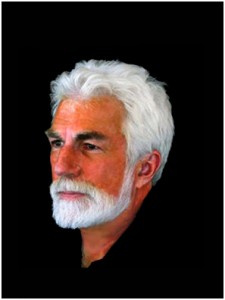 Ten years ago I came really close to getting my ass thrown out of a small writers’ group in Doylestown, PA. In retrospect, the group disbanded rather quickly and not to be cruel, but I think it deserved to.
Ten years ago I came really close to getting my ass thrown out of a small writers’ group in Doylestown, PA. In retrospect, the group disbanded rather quickly and not to be cruel, but I think it deserved to.
I remember the first assignment well. We were to answer 100 questions about a theoretical character that we had created out of…nothingness. The questions ran something like this: What kind of soft drink do they prefer? What kind of cigarette do they smoke? Lee Jeans or Wrangler? What religion? American or foreign car? Steak or seafood? I scanned over the questions and couldn’t stomach it. A character isn’t a basket into which a bunch of traits are arbitrarily tossed-in any more than your favorite song could be dissected into, how many quarter notes, eight notes and how many C,D, E, F, or Gs are in it. It just misses the point entirely.
The following week everybody read their Diet Coke, Salem, Wrangler answers, and when I stood up, I read a few paragraphs about a guy in the middle of a bad fight with his wife. It was pretty nasty, but even in four paragraphs you knew that they were still in love, one of them was in a world of hurt, and they were both lying like bandits.
Dialogue and characterization can’t be quantified by means of lists and outlines. It’s not how you do it. It’s a darker and murkier process where there are only two rules: First, the characters have to be ALIVE. Second, you have to give a shit about them. If you can’t do those two things, having them drive a Jaguar, drink Dewars, and wear a Rolex won’t save you…or your character.
Tension
Tension, tension, and more tension! And get right to it. Nowadays, sentences like these are not uncommon: “I was trying to pry his head off my bumper, but my hands were red and slippery and with all the sirens it was hard to concentrate.” Tacky or not, it’s difficult not to read the second sentence just to see if he was successful prying the head off. And that’s one way to pull in a reader.
Sol Stein, author of Stein on Writing, had a clever way of bringing tension to a scene and he’d display it in his workshops. Two characters on a stage…each of them working from a different script. The man’s script: I have to get this woman to sit down on the couch. If not, she’s going to leave and spill the beans. The woman’s script: If this man is successful in getting you on the couch, you’ll be raped. Give two actors just those two scripts and see what hell unfolds.
Voice
Every character in your novel should have his own voice. The boy who robs the liquor store two blocks down shouldn’t sound like your grandmother who teaches Sunday school. …Actually, the perverse side of my mind that likes to find exceptions, just notified me that this is not ALWAYS the case. Your granny could sound like the guy who runs the liquor store, but there’d be some explaining to do.
Different writers accomplish this different ways, and as far as I’ve been able to figure out, most of us lie about it. When cornered, I explain that such-and-such a character is an amalgam of different people I’ve met in my life. It’s safe, makes a certain amount of sense, and it’ll probably keep you out of the courtroom.
In the same vein, almost every novel has a disclaimer stating that all the characters are fictitious. Yup. Sure. Every character is just a complete construct of the imagination. Not really. And like making sausage and passing bills in the Senate, it’s not usually a pretty process. But sausage tastes great and bills get passed and again, the only thing you have to do is breathe life into your character. Sometimes, if you breathe enough life into enough characters, they can have a mutiny and carry your plot to weird places you never expected…or even wanted. That’s the really sweet part in writing…catching up to what your characters are plotting.
